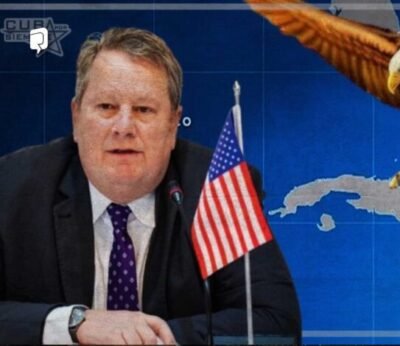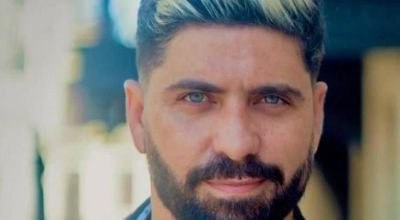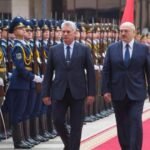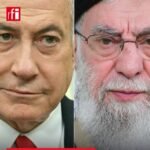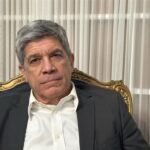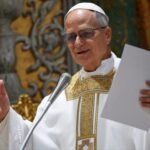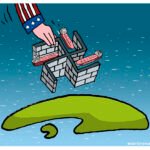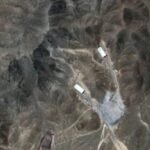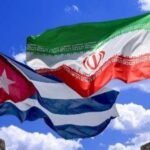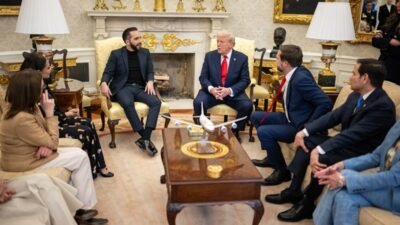 A pesar de su aparente desdén por América Latina, el estilo político del presidente Trump y sus tendencias autoritarias son producto de una cultura política peculiarmente panamericana con profundas raíces históricas.
A pesar de su aparente desdén por América Latina, el estilo político del presidente Trump y sus tendencias autoritarias son producto de una cultura política peculiarmente panamericana con profundas raíces históricas.
Por, Andreas Campomar
ARTICULO ORIGINAL EN https://engelsbergideas.com/notebook/trump-the-caudillo/
Fue una observación tan desdeñosa que desde entonces se ha convertido en un símbolo de las relaciones entre Estados Unidos y Latinoamérica, aunque rara vez se cita íntegramente. En 1971, Richard Nixon le dijo a Donald Rumsfeld, a modo de introducción a la política exterior, que «lo único que importa en el mundo son China, Rusia y Europa. Latinoamérica no importa. Conscientemente, a la gente ahora le importa un bledo Latinoamérica». Más de 50 años después, poco había cambiado cuando el 47.º presidente de Estados Unidos decidió reiterar un sentimiento similar: «No los necesitamos; ellos nos necesitan». Fue la forma de expresarse —a ratos grandilocuente y a ratos mezquina— la que reveló algo interesante: Donald J. Trump podría ser más una creación de las Américas de lo que a él le gustaría creer.
Se ha hablado mucho de la presidencia de Trump, producto de la era de la telerrealidad que lo condujo a la Casa Blanca. Su ahora infame reunión con Volodímir Zelenski, que debería haber tenido lugar a puerta cerrada, concluyó con lo que parecía un eslogan: «Esto va a ser un espectáculo televisivo». La reciente postura quijotesca sobre los aranceles —«la palabra más hermosa del diccionario»— ha vuelto a convertir el impuesto a las importaciones en un asunto tanto moral como diplomático. Y, sin embargo, dada la falta de constancia de Trump y su asombrosa capacidad para vivir el momento, cualquier política puede ser revertida. Podría sorprender, aunque no a quienes conocen mejor la historia del hemisferio occidental, que Trump tienda a comportarse, tanto política como culturalmente, como un político latinoamericano. A principios de este año, Mike Waltz, entonces asesor designado de seguridad nacional de Estados Unidos, expuso la visión de la administración con un estilo informal: «Se trata de reintroducir a Estados Unidos en el hemisferio occidental, ya sea enfrentándose a los cárteles, al Canal de Panamá, a Groenlandia, al Golfo de América —que me encanta, pero estoy esperando a ver cómo se redibujan los mapas—. Se le puede llamar la Doctrina Monroe 2.0, pero todo esto forma parte de la agenda de «América Primero» y se ha ignorado durante demasiado tiempo». Aunque Steve Bannon fue más conciso (por no decir desconcertante) en su formulación: «La Doctrina Monroe 2.0 se encuentra con la fortaleza estadounidense y el Destino Manifiesto».
Es en el contexto de la «Idea del Hemisferio Occidental» que deben considerarse las presidencias de Trump. En una carta escrita a Alexander von Humboldt en 1813, Thomas Jefferson fue el primero en expresar la idea de que «las naciones europeas constituyen una división separada del mundo» (en la que Estados Unidos nunca debería participar); Mientras que América «tiene un hemisferio propio… su propio sistema de intereses, que no debe subordinarse a los de Europa». Fue esta idea del panamericanismo —Jefferson ya había intercambiado ideas con el más universal de los estadounidenses, el venezolano Francisco de Miranda— la que se extendió por Latinoamérica.
Para 1823, la Doctrina Monroe finalmente se manifestó, resultado de la convergencia de los intereses estadounidenses y británicos contra la expansión francesa. La doctrina buscaba proteger a América de la futura colonización por parte de las potencias europeas. De hecho, uno de sus principios básicos era que las repúblicas reconocidas estaban proscritas de la «futura colonización por cualquier potencia europea». A principios del siglo XX, Theodore Roosevelt introdujo un «corolario» a la doctrina, que permitía a Estados Unidos «ejercer poder de policía internacional en casos flagrantes de tal irregularidad o impotencia»». Roosevelt, otro presidente aficionado a los aforismos, fundamentó su política exterior con la contundente frase «habla suavemente y lleva un gran garrote».
Es de esperar que Trump pueda ser miope en su visión de Latinoamérica. Sus recientes objetivos políticos —recuperar el Canal de Panamá, reincorporar a Cuba a la lista de países con terrorismo de Estado y rebautizar el Golfo de México (aunque no a Estados Unidos)— parecen una combinación extraña y algo prepotente de los aspectos más espinosos de la Doctrina Monroe y el Destino Manifiesto. Su postura en relación con la región sigue siendo ambigua: compromiso con desinterés. La orden ejecutiva que firmó en 2017 para construir un muro en la frontera con México fue lo que los freudianos llamarían un «escudo protector» (Reizschutz): un mecanismo de distanciamiento de una región con la que Estados Unidos comparte una historia común. Y, sin embargo, a pesar de ello, ha favorecido a aquellos líderes latinoamericanos en quienes ve algo de sí mismo.
La obsesión latinoamericana con el caudillo se remonta a los líderes militares de las guerras de independencia, o incluso antes, a los conquistadores. El poeta y diplomático mexicano Octavio Paz creía que estos hombres se habían apoderado del Estado como si fuera un botín medieval. El «libertador» era la «imagen del dictador hispanoamericano»… en embrión». Las iteraciones de este tipo en el siglo XXI se pueden observar en tres de los presidentes latinoamericanos favoritos de Trump: Javier Milei (Argentina), Nayib Bukele (El Salvador) y Daniel Noboa (Ecuador).
Trump ha hablado abiertamente de su «presidente favorito», Javier Milei. En él, ve un aliado cultural, un inconformista que no teme alzar la voz. El argentino es partidario del anarcocapitalismo, con una profunda antipatía hacia el Estado y sus élites políticas. Además, se ve a sí mismo como un guerrero en primera línea de la guerra cultural, que, según él, tiene sus raíces en el mismo marxismo que detesta.
Desafortunadamente, la falta de diplomacia, o simplemente la falta de tacto, se ha malinterpretado como honestidad. Los insultos de Milei —en contradicción con el formalismo inherente a la cultura hispanoamericana— se despachan con presteza. A los economistas que no están de acuerdo con sus políticas se les llama «econochantas». Llamó «ignorante» al expresidente de México. No contento con describir al presidente del gobierno español, Pedro Sánchez, como un «socialista arrogante», atacó a su esposa con el epíteto de «corrupta».
Por el momento, las relaciones de Trump siguen siendo ventajosas, pero, como demuestra su enfriada relación con Elon Musk, es improbable que mantengan el rumbo. Otros gobiernos latinoamericanos, especialmente Perú, Chile, Brasil y Venezuela, tendrán que navegar las turbulentas aguas entre la estrategia de China para la región y la volubilidad de Trump. El megapuerto chino de Chancay, en Perú, valorado en 3.500 millones de dólares, ya ha provocado la indignación de la administración Trump y es probable que imponga aranceles vertiginosos a cualquier usuario latinoamericano. Sin embargo, China solo ha buscado llenar el vacío dejado en la región por una sucesión de administraciones estadounidenses.
La reciente política comercial proteccionista de Estados Unidos será un territorio familiar para los latinoamericanos, que tuvieron que soportar las décadas de pesadilla (de 1930 a 1980) de la industrialización por sustitución de importaciones (ISI) para proteger a las industrias nacionales de la competitividad de los productos extranjeros. El fuerte endeudamiento para financiar la rápida industrialización finalmente condujo a un colapso dramático bajo una deuda insostenible y una ineptitud crónica. No es que Estados Unidos vaya a sufrir desgracias similares (ningún país de tanta importancia económica ha implementado la ISI como estrategia), pero su efecto en sus vecinos será notable.
El posmodernista Robert Coover calificó una vez el «boom» de la literatura latinoamericana como «la exportación más atrevida y peligrosa de la región»; estaba reseñando una novela de Mario Vargas Llosa. La reciente muerte del premio Nobel peruano marca el fin de una generación de escritores latinoamericanos que buscaron comprender sus inciertas democracias y contrarrestar la corriente autoritaria inherente a la región (especialmente a través de ese género literario tan latinoamericano: la novela de dictadores).
Vargas Llosa comprendió pronto la importancia de una presidencia de Trump. En 2016, razonó: «[Estados Unidos] es un país demasiado importante… para tener en la Casa Blanca a un payaso, un demagogo, un racista, como el Sr. Trump». Pensaba que el triunfo de Trump, el triunfo del populismo; una que negaba las mejores tradiciones de Estados Unidos, que habían permitido al país convertirse en la mayor potencia del mundo. Consideró la elección de Trump en parte como un suicidio nacional. Al comienzo de su novela Conversación en la Catedral, Vargas Llosa hace que su protagonista plantee la implacable pregunta: «¿En qué preciso momento se jodió el Perú?». ¿Podría planteársele una pregunta similar a Estados Unidos con el tiempo? Después de todo, esos países del hemisferio occidental comparten una historia común y, quizás, ideas comunes.
Despite his apparent disdain for Latin America, President Trump’s political style and strongman tendencies are the product of a peculiarly pan-American political culture with deep historical roots.
/https%3A%2F%2Fengelsbergideas.com%2Fwp-content%2Fuploads%2F2025%2F04%2FTrump-Bukele.jpg)
It was an observation so dismissive that it has since become shorthand for relations between the United States and Latin America, though it is rarely quoted in full. In 1971, Richard Nixon told Donald Rumsfeld, by way of a primer on foreign policy, that ‘the only thing that matters in the world is China, Russia and Europe. Latin America doesn’t matter. Consciously, people don’t give one damn about Latin America now’. Over 50 years later, little had changed when the 47th president of the United States chose to reiterate a similar sentiment: ‘We don’t need them; they need us.’ It was the manner of the delivery – by turns grandiose and petty – that revealed something interesting: Donald J. Trump may be more a creation of the Americas than he would like to believe.
Much has been made of Trump’s clickbait presidency, a product of this age of reality television that helped guide him to the White House. His now infamous meeting with Volodymyr Zelensky, which should have taken place in camera, signed off with what sounded like a catchphrase: ‘This is going to be great television.’ The recent quixotic stance on tariffs – ‘the most beautiful word in the dictionary’ – has made the import tax both a moral and diplomatic issue again. And yet, given Trump’s lack of constancy and an uncanny ability to live in the moment, any policy can be open to reversal. It might come as a surprise, though not to those better acquainted with the history of the western hemisphere, that Trump tends to comport himself, both politically and culturally, as a Latin American politician.
Early this year, Mike Waltz, then the United States’ national security advisor-designate, set out the administration’s vision in saloon-bar fashion: ‘This is about reintroducing America in the western hemisphere, whether that is taking on the cartels, the Panama Canal, Greenland, the “Gulf of America” – which I love, I’m waiting to see the maps redrawn. You can call it Monroe Doctrine 2.0, but this is all part of the America First agenda and it’s been ignored for far too long.’ Though Steve Bannon was more succinct (not to say unnerving) in his formulation: ‘Monroe Doctrine 2.0 meets American fortress meets Manifest Destiny.’
It is in the context of the ‘Western Hemisphere Idea’ that Trump’s presidencies should be seen. In a letter written to Alexander von Humboldt in 1813, Thomas Jefferson first gave voice to the notion that the ‘European nations constitute a separate division of the globe’ (in which the United States should never engage); whereas America ‘has a hemisphere to itself… its separate system of interests, which must not be subordinated to those of Europe’. It was this idea of Pan-Americanism – Jefferson had already exchanged philosophies with that most universal of Americans, the Venezuelan Francisco de Miranda – that percolated through Latin America.
By 1823, the Monroe Doctrine finally became manifest, the result of a convergence of US and British interests against French expansion. The doctrine sought to shore up the Americas against future colonisation by European powers. Indeed, one of its basic principles was that the recognised republics were proscribed from ‘future colonization by any European power’. By the beginning of the 20th century, Theodore Roosevelt ushered in a ‘Corollary’ to the doctrine, which allowed the United States to ‘exercise international police power in “flagrant cases of such wrongdoing or impotence”’. Roosevelt, another president partial to an aphorism, underpinned his foreign policy with the telling line ‘speak softly and carry a big stick’.
That Trump can be myopic in his view of Latin America is to be expected. His recent policy objectives – to ‘take back’ the Panama Canal, restore Cuba to the state-sponsored-terrorism list, and rebrand the Gulf of Mexico (though not América) – seem a bizarre and somewhat high-handed combination of the thornier aspects of the Monroe Doctrine and Manifest Destiny. His position in relation to the region remains Janus-like: engagement coupled with uninterest. The executive order that he signed in 2017 to build a wall along the country’s Mexican border was what Freudians might term a ‘protective shield’ (Reizschutz): a distancing mechanism from a region with which the United States shares a common history. And yet, despite this, he has favoured those Latin American leaders in whom he sees something of himself.
The Latin American obsession with the caudillo (‘strongman’ or ‘chief’) can be traced back to the military leaders in the wars of independence, if not further back to the conquistadors. The Mexican poet and diplomat, Octavio Paz, believed these men to have taken ‘over the state as if it were medieval booty’. The ‘liberator’ was the ‘image of the “Spanish American dictator”… in embryo’. The 21st-century iterations of this type can be seen in three of Trumps’s favourite Latin American presidents: Javier Milei (Argentina), Nayib Bukele (El Salvador) and Daniel Noboa (Ecuador).
Trump has spoken openly about his ‘favourite president’, Javier Milei. In him, he sees a cultural ally, a contrarian not afraid to speak out. The Argentinian is an adherent of anarcho-capitalism, with a deep-seated animus for the state and its political elites. Moreover, he sees himself as a warrior on the front lines of the culture war, which he believes to be rooted in the very Marxism he loathes.
Unfortunately, a lack of diplomacy, or plain tactlessness, has been misconstrued as honesty. Milei’s insults – at odds with an over-formality inherent in Spanish-American culture – are despatched with alacrity. Economists who fail to agree with his policies are called ‘econochantas’ (‘econo-frauds’). He called the ex-president of Mexico ‘ignorant’. Not content with describing the prime minister of Spain, Pedro Sánchez, as an ‘arrogant socialist’, he went after his wife with the epithet ‘corrupt’.
Unlike the Colombian president, Gustavo Petro, a former member of the M-19 guerilla movement, whom Milei called a ‘murdering terrorist’, Trump has found an ally, or deportation partner, in El Salvador’s Bukele. The swaggering self-styled sobriquet – the ‘world’s coolest dictator’ – is a Trumpian formulation. Bukele may have turned his country into one of the safest in Latin America, partly through his policy of incarceration, but the ‘crackdown’ is fast becoming a purge. The construction of the region’s largest maximum security prison, CECOT, has started to attract labels such as ‘concentration camp’ and ‘gulag’. Where these hard-line policies are enacted, human rights abuses will duly follow.
Noboa’s recent re-election in Ecuador has been put down to the ‘Trump effect’. During the election campaign, Noboa was a guest of the United States president at Mar-a-Lago, which demonstrated the kind of access he has to the White House. With Ecuador having transformed itself from one of the safest countries in the region to the most dangerous (it has the highest homicide rates), Noboa may turn out to be a less successful authoritarian than Bukele. He nevertheless sees himself as a ‘terrible’ enemy to have. Not that he has sought to make friends with other leaders in the region. He has been unguarded in assessing his fellow presidents’ shortcomings: Petro is a ‘left-wing snob’, Milei seems ‘full of himself (which is very Argentinian)’, and Bukele is ‘arrogant and only seeks to control power for himself and to make his family rich’.
This regional factionalism, presented by verbal mudslinging, is nothing new. When, in the early 2000s, Argentina suffered the kind of financial meltdown that only stems from over a century of political and economic mismanagement, the country became toxic in the eyes of its neighbours. Such was the ill-feeling engendered by the crisis that the then president of Uruguay, Jorge Batlle, fulminated: ‘Do not compare Argentina with Uruguay… [the Argentines are] a den of thieves from the very top to the bottom.’ Twenty years later, at the 30th anniversary of the South American trade bloc Mercosur, there was an ill-tempered exchange with Argentina, when Uruguay pushed for more flexibility to negotiate free trade agreements. ‘If we are a burden, take another boat’, was the Argentinian president’s caustic response.
For the moment, Trump’s relationships remain expedient, but, as his cooling partnership with Elon Musk demonstrates, are unlikely to stay the course. Other Latin American governments – especially Peru, Chile, Brazil and Venezuela – will have to chart the choppy waters between China’s strategy for the region and Trump’s changeability. The $3.5 billion Chinese ‘mega-port’ at Chancay in Peru has already incurred the Trump administration’s indignation and is likely to attach vertiginous tariffs for any Latin American user. Yet China has only sought to fill the vacuum in the region left by a succession of US administrations.
The United States’ recent protectionist trade policy will be familiar territory for Latin Americans, who had to endure the nightmare decades (from the 1930s to the 1980s) of import substitution industrialisation (ISI) to protect domestic industries against the competitiveness of foreign goods. Heavy borrowing to fund rapid industrialisation finally led to a dramatic collapse under unsustainable debt and chronic ineptitude. Not that the United States will suffer similar misfortunes (no country of such economic importance has implemented ISI as a strategy), but its effect on the country’s neighbours will be marked.
The postmodernist Robert Coover once called the ‘Boom’ in Latin American literature the ‘region’s headiest and most dangerous export’; he was reviewing a novel by Mario Vargas Llosa. The recent death of the Peruvian Nobel laureate sees the end of a generation of Latin American writers who sought to understand their uncertain democracies and counter the authoritarian strain inherent in the region (especially through that very Latin American literary genre: the dictator novel).
Vargas Llosa understood the significance of a Trump presidency early. In 2016, he reasoned, ‘[The United States] is too important a country… to have in the White House a clown, a demagogue, a racist, like Mr Trump.’ He thought the triumph of Trump, the triumph of populism; one that negated the best traditions of the United States, which had allowed the country to become the world’s greatest power. He saw Trump’s election as in part national suicide. At the beginning of his novel Conversation in the Cathedral, Vargas Llosa has his protagonist ask the unforgiving question: ‘At what precise moment had Peru fucked itself up?’ Might a similar question be asked of the United States in time? After all, those countries in the western hemisphere share a common history and, perhaps, common ideas.
Andreas Campomar


